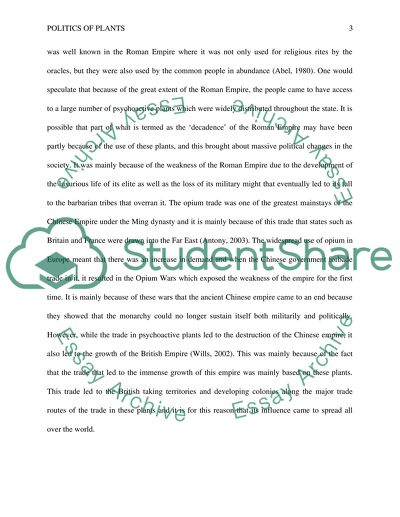Cite this document
(“War On Drugs and Politics of Plants Essay Example | Topics and Well Written Essays - 1500 words”, n.d.)
War On Drugs and Politics of Plants Essay Example | Topics and Well Written Essays - 1500 words. Retrieved from https://studentshare.org/psychology/1640844-war-on-drugs-and-politics-of-plants
War On Drugs and Politics of Plants Essay Example | Topics and Well Written Essays - 1500 words. Retrieved from https://studentshare.org/psychology/1640844-war-on-drugs-and-politics-of-plants
(War On Drugs and Politics of Plants Essay Example | Topics and Well Written Essays - 1500 Words)
War On Drugs and Politics of Plants Essay Example | Topics and Well Written Essays - 1500 Words. https://studentshare.org/psychology/1640844-war-on-drugs-and-politics-of-plants.
War On Drugs and Politics of Plants Essay Example | Topics and Well Written Essays - 1500 Words. https://studentshare.org/psychology/1640844-war-on-drugs-and-politics-of-plants.
“War On Drugs and Politics of Plants Essay Example | Topics and Well Written Essays - 1500 Words”, n.d. https://studentshare.org/psychology/1640844-war-on-drugs-and-politics-of-plants.


